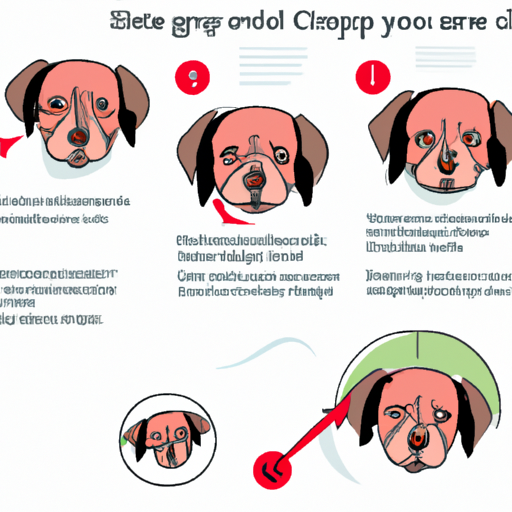Cherry eye, a common condition in dogs, can be an alarming sight for any dog parent. However, before you consider surgical options, let’s delve deep into some non-surgical methods to treat this condition.
Understanding Cherry Eye
First, it’s important to understand what you’re dealing with. Cherry eye, formally known as nictitans gland prolapse, is a condition in which a dog’s third eyelid gland protrudes and becomes visible. While it can look rather intimidating, it’s usually not painful for the dog. However, if left untreated, it can lead to problems such as dry eye or even conjunctivitis.
Non-Surgical Treatment Options
There are a few non-surgical treatment options you can consider:
- Eye Drops: Often the first line of defense, these can help reduce swelling and inflammation.
- Ointments: These can keep the eye lubricated, helping to protect it and potentially allow the gland to return to its normal position.
- Massage: Gentle massage can sometimes help the gland return to its normal location, but this should only be done under the guidance of a veterinary professional.
- Holistic and Natural Remedies: Some dog parents have found success with natural remedies such as chamomile tea compresses or homeopathic treatments. But again, it’s essential to consult with your vet before trying any home remedies.
When Non-Surgical Treatments Fail
Sometimes, despite our best efforts, non-surgical treatments may not be successful. In these cases, surgery may be the only option to prevent further complications. However, this decision should not be made lightly and should always involve a detailed discussion with your vet.
Caring for Your Dog After Treatment
After any treatment, it’s crucial to monitor your dog’s condition closely. Be sure to:
- Keep their eye area clean and free from debris.
- Prevent them from scratching or rubbing their eye.
- Regularly check for any changes or worsening of the condition.
- Always follow your vet’s advice regarding follow-up appointments and care.
Frequently Asked Questions (FAQs)
Q: Can cherry eye go away on its own?
A: In some cases, cherry eye may resolve itself without treatment. However, it’s always best to consult a vet to prevent any long-term damage.
Q: Is cherry eye painful for my dog?
A: While it may look uncomfortable, cherry eye itself is not usually painful. However, if left untreated, it can lead to secondary conditions that may cause discomfort.
Q: Are certain breeds more susceptible to cherry eye?
A: Yes, certain breeds such as Bulldogs, Beagles, Cocker Spaniels, and others are more prone to developing cherry eye.
Remember, while it can be scary to see your beloved pet with a cherry eye, there are ways to manage it effectively without resorting to surgery. Always consult with a vet before attempting any treatment, and ensure your dog’s comfort and wellbeing are your top priorities.



